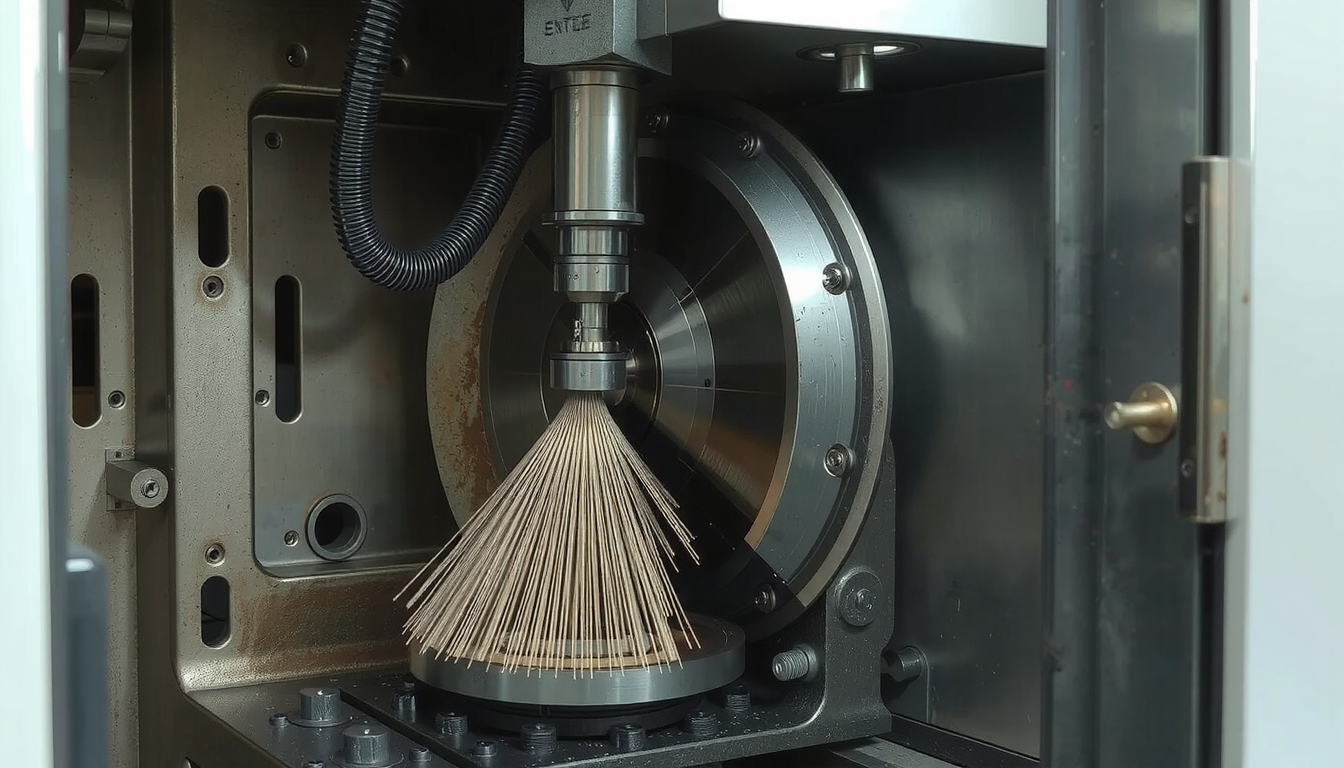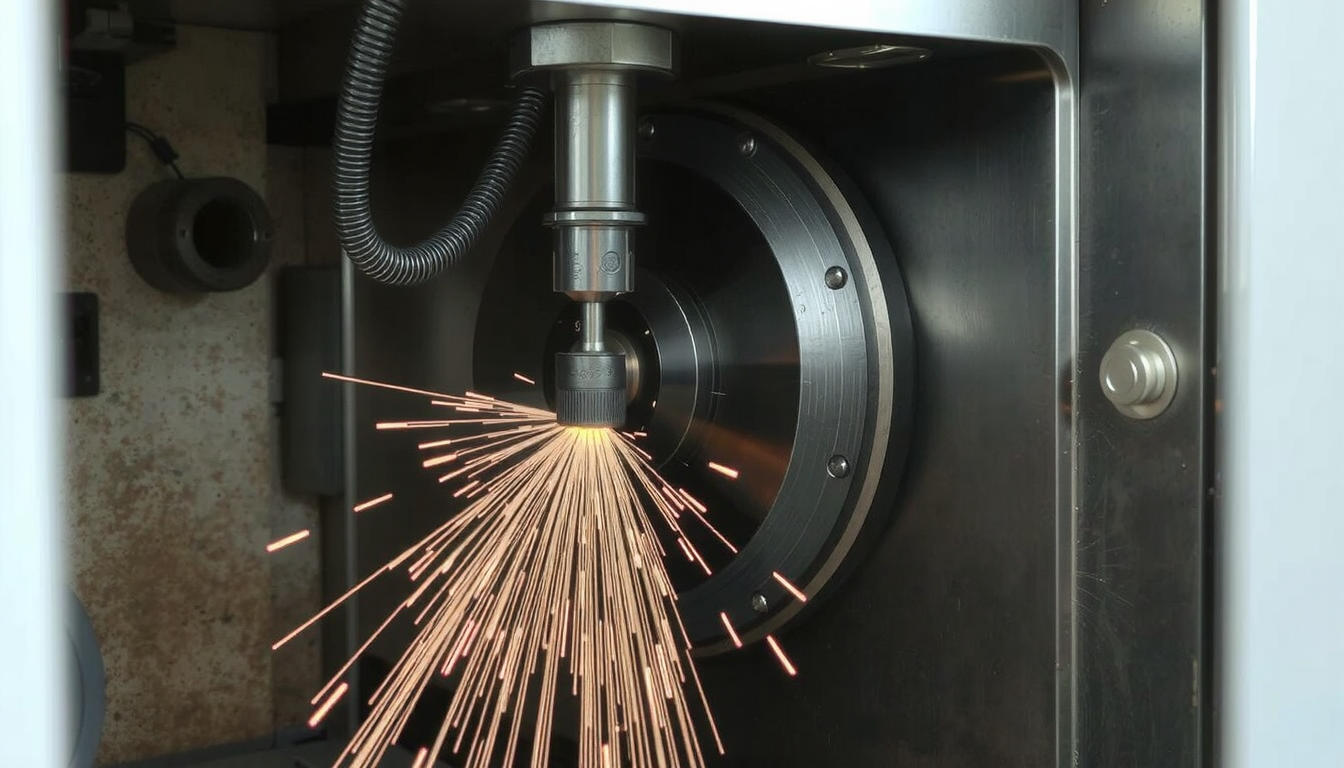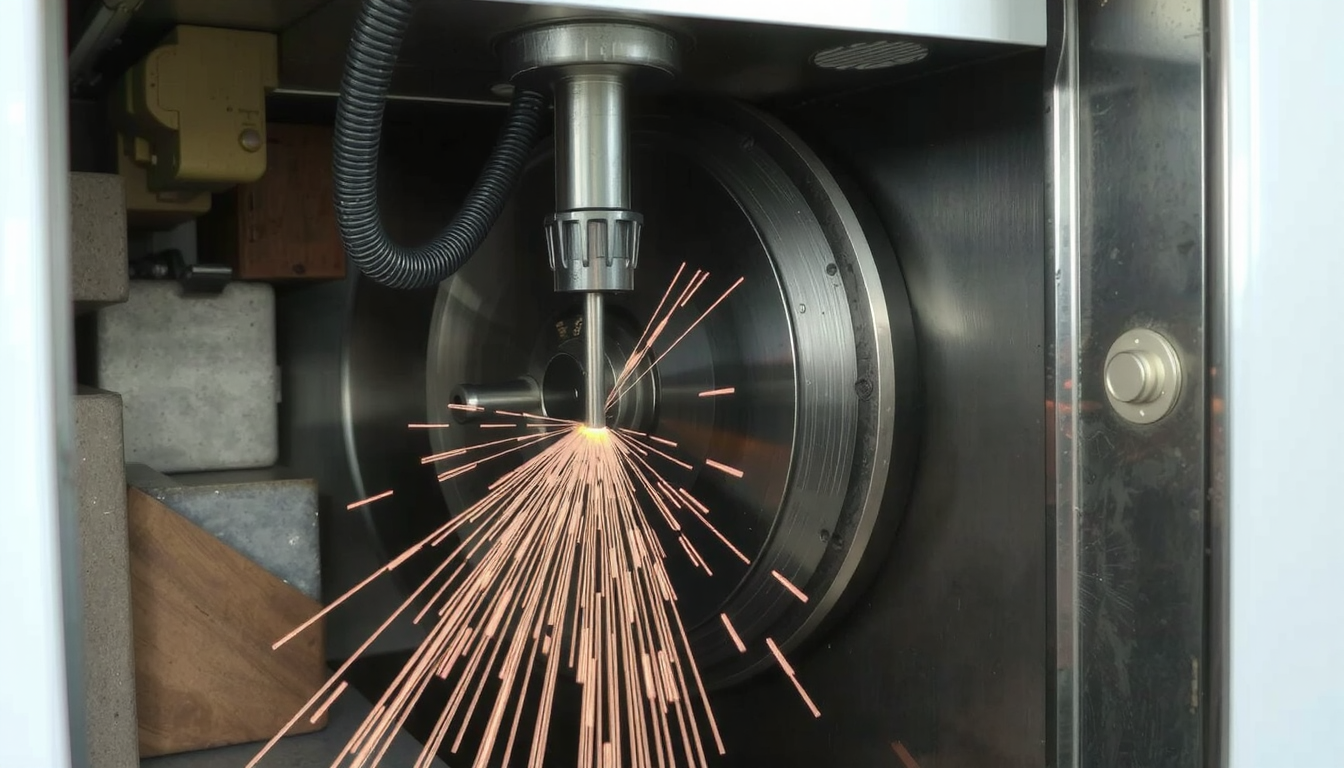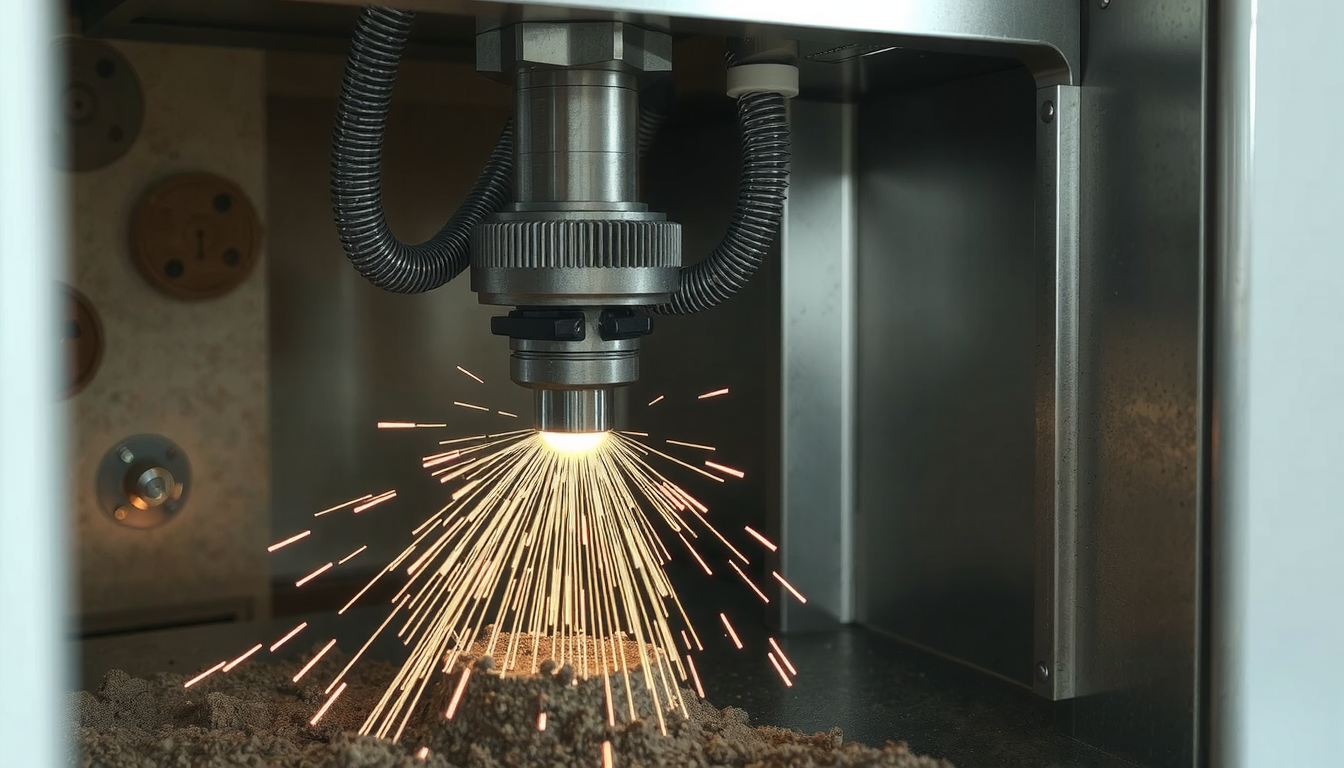So, what does CNC turning refer to? In simple terms, CNC turning makes round parts. It uses a machine called a lathe. A block of material spins very fast while a cutting tool removes material.

The “CNC” term stands for Computer Numerical Control. A filed computer program operates the machine not only at a distance but also with a very high degree of accuracy. Such automation leads to CNC turning being quick and precise. Moreover, it can generate many identical parts in such an automatic way.
In this guide, we will teach you the ABC of CNC turning. You will get to know the differences between it and milling. You will take a ride from a digital blueprint to a finished part. We will also discuss whether it is suitable for your project or not.
The Core Principle: How CNC Turning Works
CNC turning mechanics are easily understood. This process is characterized by the workpiece spinning and a cutting tool moving along it. This is the “subtractive” method. It is the making of a component by cutting from a solid mass of material.
To get the full picture, we need to summarize what the machine we are talking about is serving. The key components also have to be identified. And, of course, we need to see the processed steps.
The Key Components of a CNC Lathe
A CNC lathe composes a fixed number of essential parts that are working together. Every part has a designated task in the turning process.
| Component | Function |
|---|---|
| Chuck/Collet | The workpiece gripper at the lathe device maintains the workpiece steady. |
| Spindle | The machine part that rotates the chuck and the workpiece. |
| Workpiece | The unmilled block of material (for instance metal or plastic) being worked on. |
| Turret | A rotating tool holder that carries several cutting tools together. |
| Cutting Tool | The sharp part that makes the cut inside the workpiece. |
| Tailstock | It is a stabilized section that is used to hold the opposite end of a long workpiece. |
The chuck is where the workpiece goes. The spindle is the part that rotates it. The turret is the one that chooses the right cutting tool and moves it into the workpiece that is turning. This is how you get the desired shape. But in this case, the tailstock serves as a support to avoid bending of long parts.
The Step-by-Step CNC Turning Process
A turned part has a unique and specific four-step journey from an idea to a physical object.
-
Design: The first stage begins with a 2D drawing or 3D CAD model. CAD stands for Computer-Aided Design. The digital file includes all dimensions and features of the final part.
-
Programming: The CAD model goes into CAM software. CAM means Computer-Aided Manufacturing. A programmer uses this software to create toolpaths. They convert the design into G-code. G-code is the language that tells the CNC machine where to move, how fast to spin, and which tool to use.
-
Setup: A machinist prepares the CNC lathe. This means securing a stock bar of material in the chuck. They load the needed cutting tools into the turret. The operator then sets the machine’s reference points. This tells the machine where the workpiece and tools are.

- Execution: The program starts. The spindle spins the workpiece at thousands of RPMs. You can hear the hum of the powerful motor. The turret brings a cutting tool to the workpiece. With a hiss, coolant floods the area. This coolant keeps the tool from getting too hot. It also washes away the chips of material that fly off as the tool makes precise cuts.
CNC Turning vs. CNC Milling: The Key Difference
People often have difficulty distinguishing between CNC turning and CNC milling. While both cutting operations can be classified as subtractive methods, they operate in opposite ways.
The main distinguishing factor is the fact that in CNC turning, the workpiece rotates while the cutting tool keeps still. Conversely, in CNC milling, the tool rotates while the workpiece is held still.
This one primary feature modifies the entire operation. This is what dictates the shapes each process can and cannot produce proficiently. Turning is suited to round parts, while milling works for straight shapes or complex shapes more suitable to blocks. Comparing it to other processes is an important part of the choice.
| Feature | CNC Turning | CNC Milling |
|---|---|---|
| Primary Motion | Workpiece rotates | Cutting tool rotates |
| Tool Type | Single-point stationary tools | Multi-point rotating tools |
| Ideal Part Geometry | Cylindrical, conical, round | Prismatic, flat, complex surfaces |
| Common Parts | Shafts, pins, bolts, fittings, nozzles | Engine blocks, brackets, molds |
| Cost-Effectiveness | Highly efficient for round shapes | Efficient for complex, non-round shapes |
The fact that the workpiece is rotated makes CNC turning the method of choice for any part that has a central axis. While milling is appropriate for parts requiring features to be cut on flat or curved surfaces.
From CAD to Component: A Practical Walkthrough
While theory is useful, watching the whole process happen is what makes it real. Making a single part: a custom-threaded aluminum standoff will be our exercise. This example will serve as an alternative for understanding what is CNC turning in a real-life situation.
Step 1: The Design in CAD
The first thing is to design the standoff in a CAD tool. It is a uniform cylinder that has a hole through the center. One end will have a flange with internal threads. The key is that the entire part is rotationally symmetric. It is hence perfect to machine with CNC turning.
Step 2: CAM and G-Code Generation
In the following step we import the CAD file into CAM software. Quite frankly we make major decisions there. We map the machine toolpaths up. This means that the first operation of “facing” will flatten the end surface. We drill the center hole after that.
Then we will operate a “roughing” tool that will take away most of the metal quickly and create the main body diameter. Finally, a “finishing” tool will take a light pass for a smooth surface. The “threading” tool will make the internal threads. The CAM software converts these tasks with the help of thousands of lines of G-code.

Step 3: Machine Setup and First-Off
We determine the stock for the operation, which must be 6061 aluminum alloy. After that, we secure it in the collet. The other part comes with touching off; the operators move the tools by hand to the stock and set their position.
Before going for a production run, a part called the “first-off” is done. In this case, we run the program at a slower speed and observe the output of the G-code operation. This way we will see if the tool is working properly, and the program is accurate. The step is fundamental to error avoidance.
Step 4: Production and Quality Control
After the “first-off” part is perfect we proceed with the entire production run. The CNC lathe is able to function autonomously. It will run during the day and the night producing hundreds or thousands of the same parts.
As parts are being produced, we are responsible for quality control. We measure important values and dimensions with digital calipers or a micrometer. For example, the outer diameter and the entire length are observed. Then we can check the internal threads with the help of a thread gauge. Thus each part fulfills the design criteria.
Common Operations and the Parts They Create
CNC turning cannot be simply defined as a single action. It is a variety of different machining operations. Each operation creates a special feature on a part. Learning these terms enables you to understand the compounding parts of production.
External and Internal Operations
Among the various operations, there are some that are most popular in the Technical Guide: CNC Turning.
- Turning: The essential function that is concerned with the processing of the external diameter of the workpiece. This is how one can create steps on a shaft or reduce the bar to a set diameter.
- Facing: This is meant to smoothen a flat end of the workpiece. It is usually the first operation done.
- Grooving/Parting: This technique uses a thin tool to create a channel or “groove” in a particular part. A different variant of the grooving type called “parting” is used to cut the finished part from the main bar stock.
- Threading: This operation allows you to apply a spiral thread in a part’s outer or inner surface. This is typically the operation that one would use to create screws, bolts, or nuts.
- Knurling: This is the process of using textures to produce a crisscross pattern on a surface. People use it most often on knobs and handles to enhance gripping.
- Drilling/Boring: Drilling gets a hole into a part’s centerline. Boring makes pre-existing holes larger at specific measurements.
The Rise of the CNC Turning Center
Basic CNC lathes can perform the aforementioned operations. However, the current trend is to use CNC turning centers.
A turning center is a lathe that includes extra capabilities. These often include “live tooling.” These are powered tools like end mills and drills that can perform milling operations. They may also have a “sub-spindle.” This is a second spindle that can grab the part and work on its back side. This allows for “done-in-one” manufacturing. A complex part can be completed in a single setup. For example, making medical implants or electrical connectors depends on special Swiss CNC turning services that are unmatched in precision on a small scale.

Is CNC Turning the Right Choice for Your Project?
Now that you have got a good grasp of what CNC turning is and its operation, it turns to whether it can be suitable for your parts or not. Just answer a few questions and everything will be cleared up. You can check a list of initial assessments to help determine if the project you are about to work on is a good fit.
When to Choose CNC Turning
- Is your part’s primary shape cone-shaped, round, or cylindrical?
- Does the component require a high level of precision together with tight dimensional tolerances?
- Are you working with materials such as aluminum, brass, steel, titanium, or certain types of rigid plastic?
- Would you need one prototype, multiple variations, or thousands of similar parts?
If you answered “yes” to most of these, CNC turning is likely a great choice.
Key Considerations for Your Part Design
- Geometry: The method is mostly the best deal for parts itemized as rotationally symmetric. Features that are not symmetric might require another process on a milling machine.
- Material: CNC turning covers a large variety of materials. It can go from soft plastics to hardened steel and superalloys.
- Tolerance: The method is renowned for being highly accurate. Typical tolerances for CNC turning are often within ±0.125 mm (±0.005 in). With adequate process monitoring, it is possible to achieve much tighter tolerances.
- Volume: It is very flexible. The automated format makes it financially viable for high-volume production. Yet, it is also adaptable enough for single units.
Design for Manufacturability (DFM) Best Practices
There are some rules to follow to make your parts easier and cheaper to produce. These are often covered in guides on Best Practices: Designing for CNC Turning.
- Be sure to keep the wall thickness as uniform as possible to avoid warping.
- Design internal corners with a small radius; cutting tools cannot create a perfectly sharp 90-degree internal corner.
- If possible, design all features to be accessible from one side to avoid a second setup.
Conclusion: Your Next Step in CNC Turning
We have examined the matter quite well; we answered the question about what is CNC turning with all its features being precise, automated, and versatile for the production of round parts. It works by taking away mass from the workpiece by rotating it against a cutting tool. Its applications are vast; from shafts and fittings to intricate medical devices, it is everywhere.
The ability to build very accurate parts from different materials is the key to its role in modern manufacturing. Be it a prototype or a production run, CNC turning is reliable.
Explore a professional CNC turning service to see what we can do for you, whether you are ready to make a prototype or move to high volumes.
At Mekalite, we specialize in transforming complex designs into high-quality machined parts.
Frequently Asked Questions (FAQ)
1. What’s the main difference between a CNC lathe and a CNC turning center?
A CNC lathe is primarily for turning, facing, and drilling along the center axis. A CNC turning center is more advanced. It is often equipped with “live tooling” and a sub-spindle. This allows it to perform milling, off-center drilling, and other operations in a single setup. This enables the creation of more complex parts.
2. Is CNC turning expensive?
The cost depends on part complexity, material, and quantity. While the initial machine investment is high, the process is highly automated and efficient. This makes it very cost-effective for production runs. For one-off parts, it can be more expensive than 3D printing. But it offers far superior material properties and precision.
3. How precise is CNC turning?
CNC turning is known for its high precision. Standard tolerances are typically around ±0.125 mm (±0.005 in). However, specialized machines and processes can achieve much tighter tolerances, often better than ±0.01 mm (±0.0004 in). This level of accuracy is critical for aerospace and medical applications.
4. Can you turn square or hex-shaped material?
Yes. While the final part is usually round, the starting workpiece can be square, hexagonal, or another shape. The machine will turn it down to a round profile. This is a common method for creating parts that have a hex head for a wrench, like a custom bolt or fitting.
5. What is the difference between turning and boring?
Turning refers to removing material from the external surface of a workpiece. Boring is a specific type of turning operation where a tool removes material from an internal surface, like an existing hole. Boring is used to enlarge a hole to a very precise diameter.

